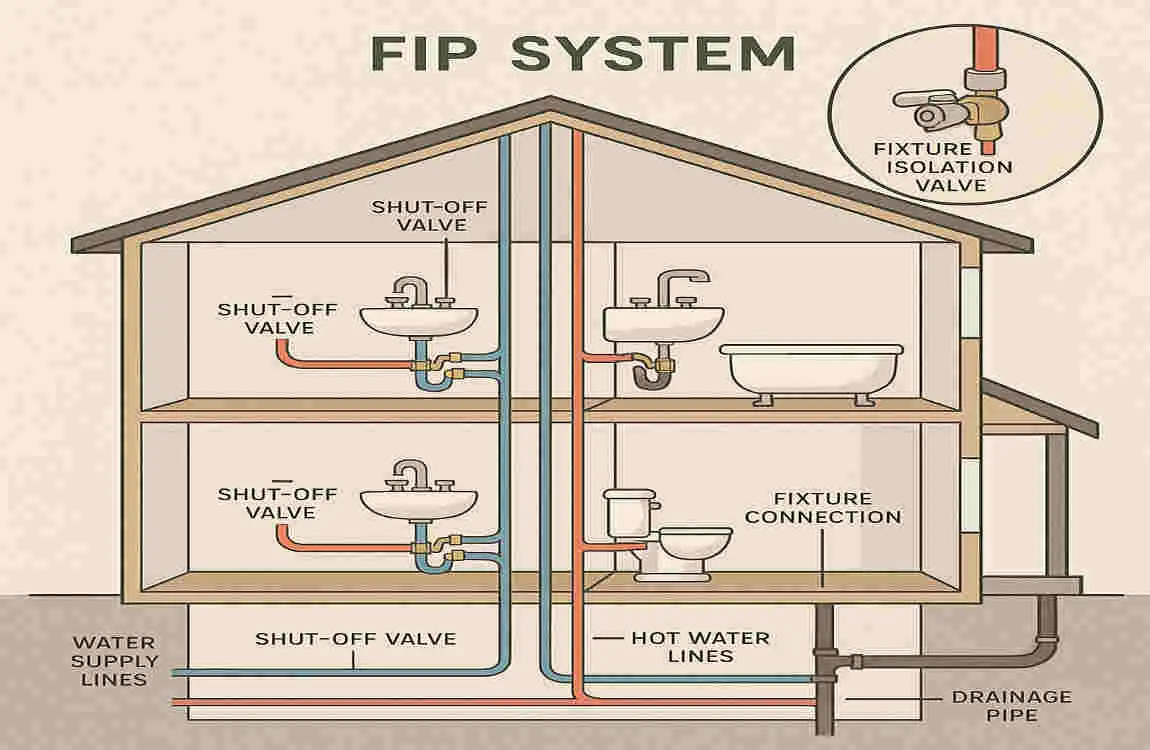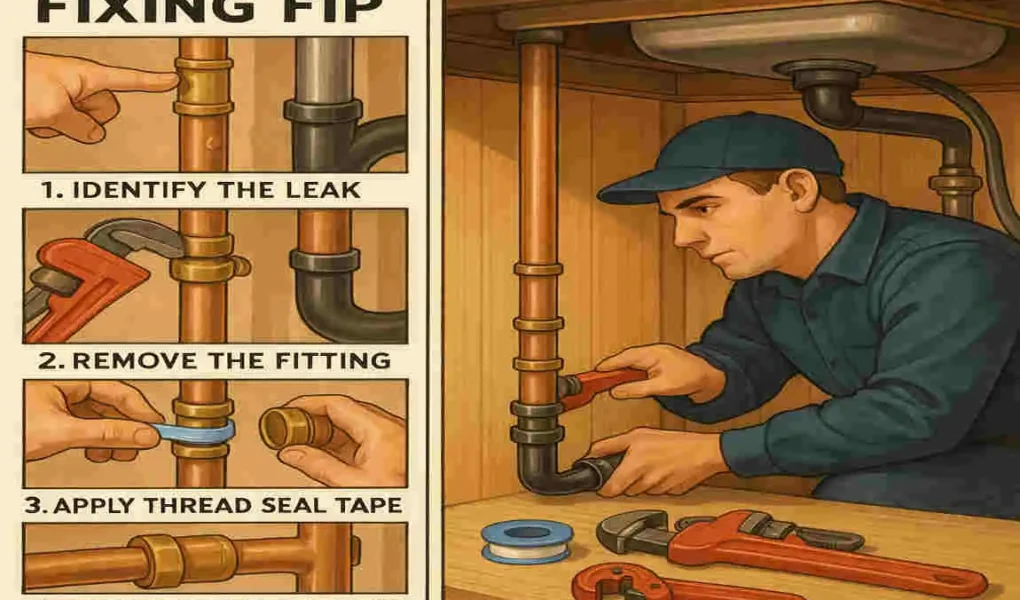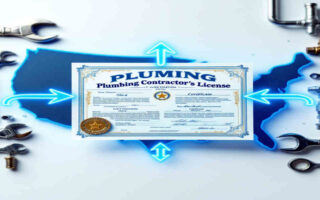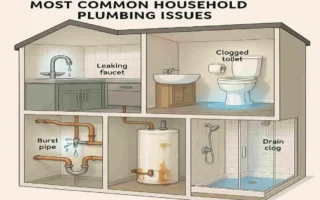Hey there, homeowner! Let’s talk about something that keeps your home running smoothly but often flies under the radar: plumbing maintenance. Imagine waking up to a flooded kitchen or a leaky faucet that just won’t quit. These headaches can turn into expensive nightmares if you ignore the basics. That’s where understanding the nuts and bolts of your plumbing system comes in handy.
Why does this matter to you? As a homeowner, knowing about FIP can help you spot issues early, save money on repairs, and maintain a comfortable living space.
Understanding FIP in Plumbing

What Exactly Is FIP?
Let’s start with the basics. What is FIP in plumbing? FIP, or Female Iron Pipe, refers to a type of pipe fitting with internal threads. These threads are on the inside, allowing it to connect to a male-threaded pipe or fitting.
Picture this: it’s like a socket that a plug screws into. FIP fittings create a tight seal, ensuring water or gas flows without leaking. Homeowners often encounter them in everyday setups, like attaching a showerhead or connecting a water heater.
FIP isn’t just for iron pipes anymore. While the name comes from iron, modern versions use various materials. But the core idea remains: it’s the “female” end of a connection.
How FIP Differs from MIP
Now, you might wonder about its counterpart, MIP. MIP stands for Male Iron Pipe, which has external threads. Think of FIP as the receiver and MIP as the inserter—they work together like puzzle pieces.
The main difference? FIP threads are inside, while MIP threads are outside. This setup allows for a secure screw-in connection. If you mix them up during installation, you could end up with leaks or damaged pipes.
Why does this matter? Understanding the difference helps you choose the right parts for repairs. For example, if you’re fixing a leaky faucet, you’ll likely need an FIP fitting to connect to the MIP end of a supply line.
Common Uses in Your Home
FIP fittings pop up all over residential plumbing. In your kitchen, they connect sink faucets to water lines. In bathrooms, you’ll find them linking toilets or showers.
They’re also common in outdoor setups, like garden hoses or sprinkler systems. Even in heating systems, FIP helps join pipes to boilers or radiators.
These fittings handle both hot and cold water lines, making them versatile. Next time you’re under the sink, look for those internal threads—that’s FIP at work.
Materials That Make FIP Fittings
FIP fittings are available in various materials to suit different needs. Brass is a popular choice because it’s strong and resists corrosion. It’s great for areas with hard water.
Galvanized steel offers durability for high-pressure systems, like gas lines. But watch out—it can rust over time if exposed to moisture.
Then there’s PVC, a lightweight plastic option for non-pressurized lines. It’s affordable and easy to install, perfect for DIY projects.
Copper and stainless steel are other options, each with its own advantages, such as longevity or resistance to extreme temperatures. Choose based on your home’s setup—brass for indoors, PVC for drains.
Why Choose FIP? The Key Benefits
FIP fittings shine in durability. They withstand daily wear and tear, reducing the chance of sudden failures.
Ease of connection is another plus. You can screw them together without fancy tools, making repairs straightforward.
Leak resistance? That’s a big one. The threaded design creates a snug fit, especially with sealants. This means fewer drips and less water waste.
Overall, FIP helps your house plumbing last longer, saving you from frequent replacements.
Threading Standards Explained
Threading is what makes FIP work. Most follow NPT (National Pipe Thread) standards, which taper slightly for a tight seal.
FIP threads connect seamlessly with MIP threads. The taper ensures they lock in as you tighten, preventing gaps from forming.
If you’re installing, remember: righty-tighty, lefty-loosey. Over-tightening can strip threads, so go gently.
For a visual, imagine a diagram showing a cross-section: the FIP ends with internal grooves waiting for the MIP’s external ones. This simple connection powers your home’s water flow.
Identifying FIP Connections in Your Home Plumbing System
Spotting FIP Fittings Visually
Identifying FIP isn’t rocket science. Look for fittings with threads on the inside—that’s your clue. They often appear as nuts or couplers on pipe ends.
Check the shape: FIP is usually cylindrical with a smooth exterior and threaded interior. Compare it to MIP, which has visible external threads.
Grab a flashlight and inspect closely. If it looks like it “receives” another piece, it’s likely FIP. Practice on a spare fitting to get the hang of it.
Where to Find Them in Your House
FIP fittings hide in plain sight. In the kitchen, check under the sink where supply lines meet the faucet.
Bathrooms are hotspots too—look at shower arms, toilet connections, or vanity sinks. Water heaters often use FIP for inlet and outlet pipes.
Don’t forget basements or utility rooms. They’re common in washing machine hookups or whole-house filters.
Outdoor spigots? Yep, FIP connects hoses there. Knowing these spots helps you target inspections.
Signs of Wear and Tear
Worn FIP fittings show telltale signs. Leaks are obvious—drips or puddles mean a failing seal.
Corrosion looks like rust or greenish buildup on metal fittings. If threads feel loose or stripped, that’s trouble.
Listen for hissing sounds, which could indicate gas line issues. Cracks or discoloration signal it’s time for replacement.
Catch these early, and you avoid bigger problems like water damage.
Safe Inspection Tips
You don’t need to be a pro to inspect safely. First, turn off the water supply to avoid surprises.
Use gloves to protect your hands from sharp edges. Avoid forcing anything—if it’s stuck, stop and reassess.
Inspect during daylight or with good lighting. Take photos for reference if you’re unsure.
Remember, safety first: if it’s a gas line, call a professional immediately.
Recommended Tools for Checks
Here’s a quick list of tools to make inspections easier:
- Adjustable wrench: For gentle tightening or loosening.
- Flashlight: To see into dark spaces.
- Pipe tape: For quick seals during checks.
- Plumber’s putty: Handy for temporary fixes.
With these, you can handle basic maintenance without hassle.
Common Plumbing Issues Related to FIP and How to Address Them
Overview of Potential Problems
FIP fittings aren’t invincible. Leaks top the list, often from loose connections or worn seals.
Corrosion eats away at metal over time, especially in damp areas. Cross-threading happens when you force mismatched parts, damaging threads.
These issues can lead to low water pressure or even bursts. Spot them early to keep things flowing.
Impact of Improper Installation
Bad installs wreak havoc. If you don’t align the threads correctly, leaks form immediately.
Over-tightening strips threads, making future fixes challenging, and skipping sealants? That’s a recipe for drips.
Think about it: a small mistake during setup can cost hundreds in repairs later. Always double-check your work.
Step-by-Step Guide to Fixes
Ready to fix? Here’s a numbered list for common issues:
- Tighten loose fittings: Use a wrench to snug them up gently. Don’t overdo it.
- Reseal with tape: Wrap PTFE tape clockwise around MIP threads before reconnecting.
- Replace damaged parts: Shut off water, unscrew the old FIP, and install a new one with pipe dope for extra security.
Follow these steps, and you’ll resolve most problems quickly.
Role of PTFE Tape and Pipe Dope
PTFE tape, or Teflon tape, is your best friend. It fills gaps in threads, preventing leaks.
Pipe dope is a paste alternative for more demanding jobs. Apply it sparingly to avoid mess.
Both enhance FIP’s seal. Use them every time you install or repair.
When to Call a Pro
Some fixes are DIY-friendly, but know your limits. If you see extensive corrosion or gas involvement, step back.
Complex systems, such as water heaters, often require expert attention. Pros have tools and experience to handle safely.
Don’t risk it—calling early saves money and stress.
Essential House Maintenance Steps Involving FIP Plumbing

Scheduled Maintenance Tips
Regular checks keep FIP fittings in top shape. Set a calendar reminder for quarterly inspections.
Look for leaks, tighten connections, and house clean away debris. This prevents minor issues from growing.
Make it a habit, like changing air filters. Your plumbing will thank you.
Best Practices for Installation
Installing FIP? Start with clean threads—wipe away dirt.
Apply tape or dope evenly. Screw in hand-tight first, then use a wrench for a final quarter-turn.
Test for leaks by running water. If dry, you’re good. These steps boost longevity.
Seasonal Checks to Prevent Issues
Seasons affect plumbing. In winter, insulate FIP joints to avoid freezing bursts.
Summer heat can expand materials—check for looseness. Drain outdoor lines before cold snaps.
Adapt to your climate: rainy areas need extra corrosion watches.
Preparing for Weather Extremes
Winter prep: Wrap exposed FIP with insulation tape. Drain pipes if unused.
For summer, ensure ventilation to prevent overheating. These tweaks keep systems stable.
Tools and Materials for DIY
Stock up on essentials. Here’s a table of recommended items:
Tool/Material Purpose Why It’s Useful
Adjustable Wrench: Tightening/loosening fittings. Versatile for various sizes
PTFE Tape Sealing threads Prevents leaks affordably
Pipe Dope Extra seal for tough jobs. Works well on metal fittings
Flashlight : Inspecting dark areas ensures you spot issues early
Replacement FIP Fittings Quick swaps Keeps you prepared for repairs
With this kit, DIY becomes breeze.
Safety First When Working
Always prioritize safety. Shut off water before starting. Wear gloves and eye protection.
If dealing with hot water lines, let them cool. Never work on live gas lines—call pros.
Stay safe, and you’ll enjoy hassle-free maintenance.
Benefits of Proper FIP Plumbing Maintenance for Homeowners
Maintaining FIP saves cash. Fixing leaks early avoids water bills skyrocketing or mold house plumbing repairs.
It extends your system’s life. Well-kept fittings last longer, delaying full replacements.
Peace of mind? Priceless. No more worrying about midnight floods.
Environmentally, it cuts water waste. Secure FIP means less dripping, conserving resources.
You contribute to a greener planet while keeping your home efficient. It’s a win-win.




